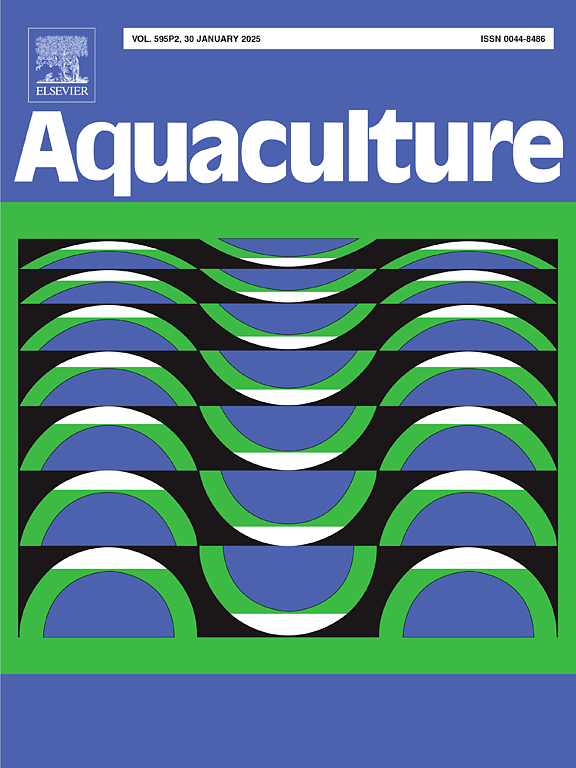Bacteria in land-based larval rearing systems: Sources of bacteria and their quantitative and qualitative influence on the microbiota of rearing water and larvae
IF 3.9
1区 农林科学
Q1 FISHERIES
引用次数: 0
Abstract
In aquaculture, mortality and poor performance during early life stages remain major bottlenecks. It is well-documented that detrimental larvae-microbe interactions significantly cause these problems. To develop microbial management strategies, it is crucial to understand where microbes in the rearing tank come from, what determines their community composition, and how microbes from live feed and water affect the gut microbiota of larvae. This study aimed to combine previously published and new data to address these questions for the larval rearing of Atlantic cod (Gadus morhua L.). Three rearing system designs were analyzed: a flow-through system (FTS), a FTS with a biofilter for microbial maturation (MMS), and a recirculating aquaculture system (RAS). Sources of bacteria in the rearing tank included external sources of bacteria (i.e., incoming water, microalgae, and live feed) and growth of bacteria in the rearing tanks. Our results supported that careful preparation and manipulation of the initial bacterial community can improve rearing conditions, particularly in FTS and MMS, by impacting the initial colonization. A lower bacterial carrying capacity in the inflowing water compared to the tank water was a challenge in FTS and MMS, as the increased access to organic matter led to substantial internal growth of bacteria in the rearing tank. Bacterial production within the rearing tank relative to incoming bacteria from water was measured to be 89 % and 94 % in FTS and MMS, respectively, compared to 49 % in RAS. Quantitatively, the live feed was the dominant source of bacteria to the larval gut (>95 %). The uptake of bacteria by larvae from the rearing water was higher in RAS (3.28 %) than in FTS (0.86 %) and MMS (0.75 %). Although the live feed microbiota dominated the number of microbes entering the gut in this study, previous research has shown that the microbial composition of the larval gut generally has higher similarity to the rearing water than to the bacteria associated with the live feed. This can be explained by the selection pressure created in/by the host. Our results also showed that biofilters significantly affected bacterial composition and density by enhancing microbial richness and evenness in the water. Depending on the organic matter load, biofilters release substantial numbers of bacteria into the water, potentially structuring the microbial environment for larvae. The microbial influence of biofilters has been shown in previous studies to enhance larval survival, i.e. higher survival in RAS and MMS compared to FTS. However, more research is necessary to explain the specific role that bacterial communities play in promoting larval health and survival. This study is the first attempt to make a bacterial budget for various larval-rearing systems. It shows that rearing technology has a tremendous impact on the microbial quality that the reared larvae are exposed to, and this new knowledge can be used to develop microbial management strategies.
求助全文
约1分钟内获得全文
求助全文
来源期刊

Aquaculture
农林科学-海洋与淡水生物学
CiteScore
8.60
自引率
17.80%
发文量
1246
审稿时长
56 days
期刊介绍:
Aquaculture is an international journal for the exploration, improvement and management of all freshwater and marine food resources. It publishes novel and innovative research of world-wide interest on farming of aquatic organisms, which includes finfish, mollusks, crustaceans and aquatic plants for human consumption. Research on ornamentals is not a focus of the Journal. Aquaculture only publishes papers with a clear relevance to improving aquaculture practices or a potential application.
 求助内容:
求助内容: 应助结果提醒方式:
应助结果提醒方式:


